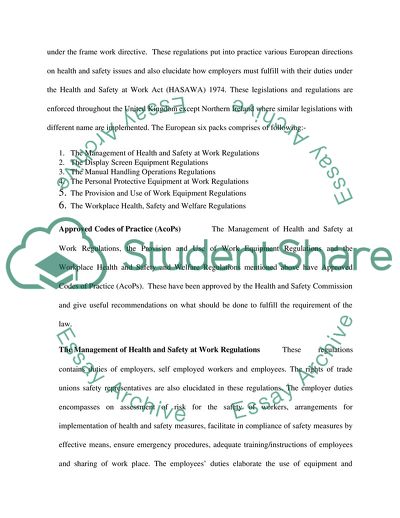Cite this document
(Health and Safety at Work Act 1974 Case Study Example | Topics and Well Written Essays - 1750 words, n.d.)
Health and Safety at Work Act 1974 Case Study Example | Topics and Well Written Essays - 1750 words. https://studentshare.org/health-sciences-medicine/1754945-health-safety-and-risk-assessment
Health and Safety at Work Act 1974 Case Study Example | Topics and Well Written Essays - 1750 words. https://studentshare.org/health-sciences-medicine/1754945-health-safety-and-risk-assessment
(Health and Safety at Work Act 1974 Case Study Example | Topics and Well Written Essays - 1750 Words)
Health and Safety at Work Act 1974 Case Study Example | Topics and Well Written Essays - 1750 Words. https://studentshare.org/health-sciences-medicine/1754945-health-safety-and-risk-assessment.
Health and Safety at Work Act 1974 Case Study Example | Topics and Well Written Essays - 1750 Words. https://studentshare.org/health-sciences-medicine/1754945-health-safety-and-risk-assessment.
“Health and Safety at Work Act 1974 Case Study Example | Topics and Well Written Essays - 1750 Words”. https://studentshare.org/health-sciences-medicine/1754945-health-safety-and-risk-assessment.


